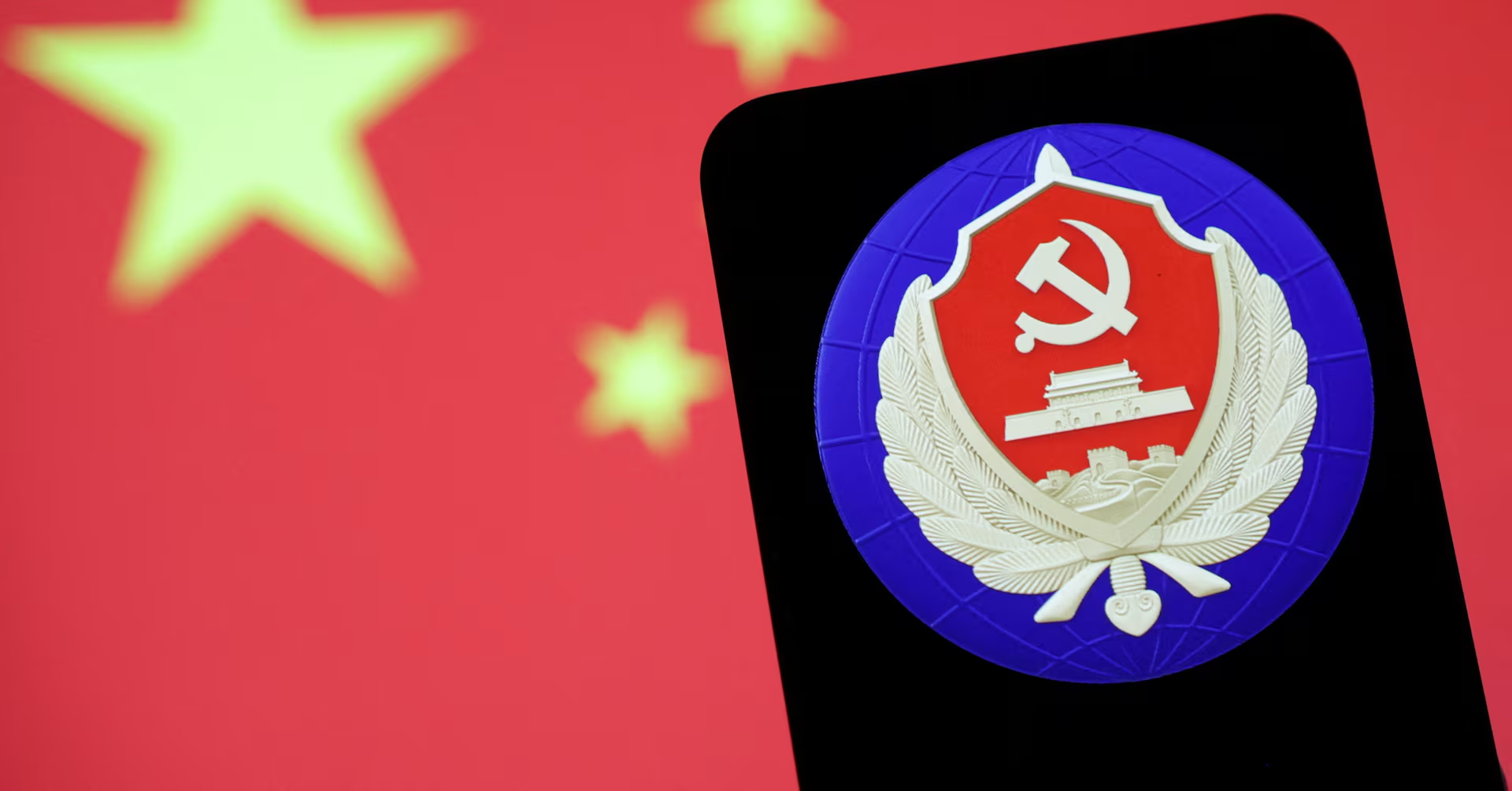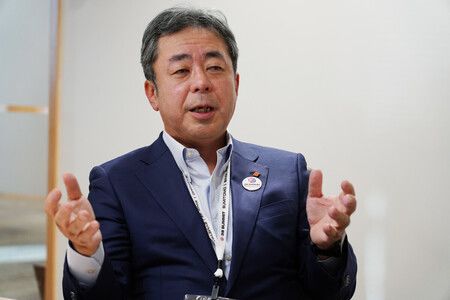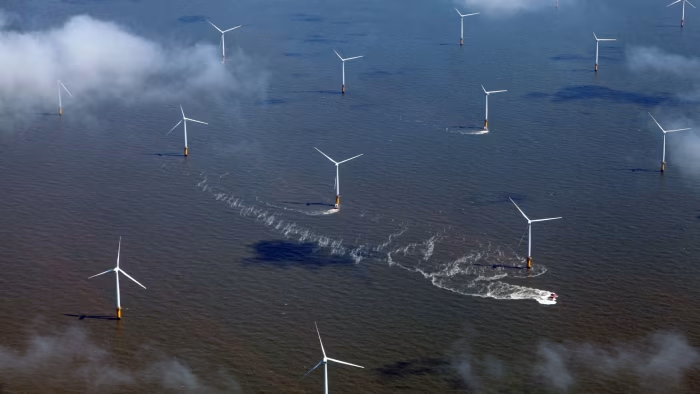- Interior Ministry hands over fleet of bulletproof vehicles KP Police RADIO PAKISTAN
- Interior Ministry hand over bulletproof vehicles to KP Police Daily Times
- Govt to strengthen KP police: Naqvi Business Recorder
- Mohsin Naqvi hands over…
Blog
-
Interior Ministry hands over fleet of bulletproof vehicles KP Police – RADIO PAKISTAN
-

Assessing Valuation After Recent Share Price Momentum
Koninklijke Philips (ENXTAM:PHIA) has experienced some shifts in stock performance over the past month, catching the attention of investors who are looking for companies navigating dynamic markets. Shares have moved up nearly 2% in the past month.
See our latest analysis for Koninklijke Philips.
After a challenging twelve months, Koninklijke Philips has been making up some ground, most recently with a positive 14.4% 90-day share price return. While the past year’s total shareholder return sits in negative territory, upside momentum has picked up, suggesting a shift in risk sentiment and possibly renewed confidence in the company’s growth potential.
If you’re interested in discovering what else is trending in healthcare and medtech, take the next step and check out See the full list for free.
With Philips trading nearly 10% below analyst targets and showing strong recent gains, the key question is whether the market is still undervaluing its long-term prospects or if future growth is now fully reflected in the price.
Philips trades at a price-to-earnings (P/E) ratio of 135.7x, which is far higher than both the sector and peer averages. The latest close of €24.26 places it firmly in the expensive camp relative to comparable medical equipment companies in Europe.
The price-to-earnings ratio measures what investors are willing to pay today for each euro of the company’s earnings. A high P/E can reflect optimism about future growth or profitability improvements, but it can also suggest overenthusiasm if not backed by strong fundamentals.
The implication here is clear: the market is pricing in ambitious profit growth for Philips, likely in response to its return to profitability and positive near-term momentum. However, when compared to the European industry average P/E of 29.1x and the peer average of 31.6x, Philips’ premium suggests investors expect more rapid earnings expansion, margin gains, or both.
See what the numbers say about this price — find out in our valuation breakdown.
Result: Price-to-Earnings of 135.7x (OVERVALUED)
However, still, a slowdown in revenue growth or any stumbles in profitability could quickly reverse recent optimism and put pressure on Philips’ lofty valuation.
Find out about the key risks to this Koninklijke Philips narrative.
While Philips looks overvalued based on its price-to-earnings ratio, our DCF model presents a different perspective. The stock is trading at a 52.9% discount to our estimated fair value of €51.56, which suggests potential upside. Does this fundamental valuation challenge the market’s skepticism?
Continue Reading
-

China accuses US of cyber breaches at national time centre
BEIJING, Oct 19 (Reuters) – China has accused the U.S. of stealing secrets and infiltrating the country’s national time centre, warning that serious breaches could have disrupted communication networks, financial systems, the power supply and the international standard time.
The U.S. National Security Agency has been carrying out a cyber attack operation on the National Time Service Center over an extended period of time, China’s State Security Ministry said in a statement on its WeChat account on Sunday.
Sign up here.
The ministry said it found evidence tracing stolen data and credentials as far back as 2022, which were used to spy on the staff’s mobile devices and network systems at the centre.
The U.S. intelligence agency had “exploited a vulnerability” in the messaging service of a foreign smartphone brand to access staff members’ devices in 2022, the ministry said, without naming the brand.
The national time centre is a research institute under the Chinese Academy of Sciences that generates, maintains and broadcasts China’s standard time.
The ministry’s investigation also found that the United States launched attacks on the centre’s internal network systems and attempted to attack the high-precision ground-based timing system in 2023 and 2024.
The U.S. embassy did not immediately respond to a request for comment.
China and the U.S. have increasingly traded accusations of cyberattacks in the past few years, each portraying the other as its primary cyber threat.
The latest accusations come amid renewed trade tensions over China’s expanded rare earths export controls, and the U.S. threatening to further raise tariffs on Chinese goods.Reporting by Liz Lee; Editing by Michael Perry
Our Standards: The Thomson Reuters Trust Principles.
Continue Reading
-

One in four elderly Singaporeans at risk of poor nutrition as frailty grows
SINGAPORE, Oct 19 — Malnutrition is quietly becoming a growing threat among Singapore’s elderly, with new data showing a sharp rise in undernourished seniors despite the city-state’s abundance of food.
According to The Straits Times,…
Continue Reading
-
It Looks Like Life Dug These Gullies on Mars, but Something Stranger Did – SciTechDaily
- It Looks Like Life Dug These Gullies on Mars, but Something Stranger Did SciTechDaily
- Mysterious gullies on Mars appear to have been carved by burrowing CO₂ ice blocks Phys.org
- Earth Lab Solves Mars Dune Gully Mystery findarticles.com
Continue Reading
-
Shingles Vaccine Lowers Risk of Dementia, Major Cardiovascular Events
At a Glance
- Being vaccinated against shingles decreased the risk of heart disease, dementia and death in people age 50 and older.
- Vaccination against shingles halved participants’ risk of vascular dementia, while lowering risk of serious…
Continue Reading
-
RSV Immunization in Infants Is Safe and Provides High Antibody Levels Regardless of Mother’s Vaccination Status
At a Glance
- Immunization against RSV is safe and effective in both infants and mothers, regardless of the mother’s RSV vaccination status.
- Mother and infant pairs in the study experienced no adverse effects and demonstrated immunity against…
Continue Reading
-

Watch SpaceX launch its 10,000th Starlink satellite to orbit today on rocket’s record-breaking 31st flight
SpaceX will notch two big milestones on a single Falcon 9 launch today (Oct. 19), and you can watch the action live.
A Falcon 9 is scheduled to launch 28 of SpaceX’s Starlink broadband satellites from Florida’s Cape Canaveral Space Force Station…
Continue Reading
-

INTERVIEW: Sumitomo Life to Mull Using AI Tech to Support Sales Agents
Newsfrom Japan
Economy
Bellevue, Washington, Oct. 18 (Jiji Press)–Sumitomo Life Insurance Co. will consider using digital technologies including generative artificial intelligence to support its sales agents, Yukinori Takada, president of the Japanese insurer, said in a recent interview with Jiji Press.
The comment followed a series of scandals in the industry that called into question the relationships between life insurance companies and their sales agents and highlighted the need to review the practice of supporting agents by dispatching employees on loan.
Takada, also chairman of the Life Insurance Association of Japan, said, “We are currently in a major turning point” for building appropriate relationships with sales agents.
The interview was held in Bellevue in the U.S. state of Washington, where Takada attended a two-day meeting with the heads of two overseas subsidiaries of Sumitomo Life through Thursday.
Japanese life insurance companies have dispatched employees to their sales agents such as banks to provide support in selling their insurance products.
[Copyright The Jiji Press, Ltd.]
Jiji Press
Continue Reading
-

Offshore wind buffeted by economic and political storms
The North Sea boasts some of the world’s best wind speeds for power generation, averaging more than 9 metres a second. But when the German government offered two prime spots to offshore developers this summer, it did not receive a single bid.
The auction’s failure in August marked a stark contrast to two years earlier, when oil companies BP and TotalEnergies agreed to pay a total €12.6bn for the rights to develop two large wind farms in German waters in the North Sea and Baltic Sea.
The industry’s enthusiasm has collapsed as higher interest rates and supply chain strains stretch the business case for projects to breaking point and political support sours in the US, where President Donald Trump has sought to block developments and suspend permits.
“Offshore wind has been going through a challenging time,” said Sven Utermöhlen, head of offshore wind at German energy company RWE, which has frozen its US offshore wind investment plans as it seeks to move away from coal.
“This has been predominately driven by rising costs, but also an overarching political climate where the fight against climate change and the drive for decarbonisation and energy transition has somewhat slowed down and has made space for other priorities.”
Since 2023, 24.1 gigawatts of offshore wind capacity and offtake agreements have been cancelled, according to figures from energy consultancy Wood Mackenzie. One gigawatt can power the equivalent of 1mn UK homes.
Ambitious government targets for the technology appear out of reach, raising questions over the pace of efforts to shift away from fossil fuels and reduce the world’s carbon dioxide emissions.
Wood Mackenzie estimates that outside of China, roughly 100GW of installed capacity could be up and running by 2030 — 140GW short of global targets for total installed capacity that year.
The industry’s struggles come after rapid growth in the rock-bottom interest rate environment of the 2010s and early 2020s, with installed capacity growing from about 3GW in 2010 to 78.5GW by the end of last year, about half of which is in China. Meanwhile, developers competing for new seabed projects and government contracts squeezed supply chains to push down costs.
Those dynamics have shifted since the coronavirus pandemic, as interest rates surged and companies in an overstretched supply chain pushed back. Analysts at TGS 4C say the industry’s capital expenditure has climbed to €3mn per megawatt, up from €2.5mn in 2022.
Projects have been cancelled or their valuations have dropped, while developers have shunned government offshore wind auctions from the Netherlands and Denmark to India. At the same time, oil companies have doubled down on fossil fuels.
Denmark’s Ørsted, the world’s largest offshore wind developer, has had to raise an extra $9bn from investors and this month said it would cut a quarter of its 8,000-strong workforce. London-headquartered Corio Generation, backed by Macquarie, has cut jobs, while Spanish developer BlueFloat Energy has quit the market.
The industry’s troubles contrast with the breakneck growth of solar power, which the International Energy Agency expects to account for 80 per cent of the projected addition of 4,600GW in global renewables capacity this decade, fuelled by falling costs and relatively straightforward permitting.
The offshore wind industry’s future hinges on the extent to which governments, utilities and corporate customers support the higher costs, helping to provide the industry and supply chain with the certainty it needs to invest.
“The central sticking point is how to distribute costs and risks between developers and taxpayers,” analysts at TGS 4C said in a recent report.

Wind turbine foundations being transported in Germany © Frank Soellner/Getty Images Denmark and Germany have both decided to offer support in the form of government-backed contracts-for-difference, to try to avoid repeats of failed auctions.
Under the contracts, pioneered in the UK, developers are guaranteed a fixed price for electricity but have to pay back the difference if the wholesale price they can sell electricity for is higher.
Many developers see such contracts as the best way to develop offshore wind given the stability they provide. Søren Lassen, head of wind at Wood Mackenzie said: “You’re really looking at the CFD as the option if you want to deliver renewables at the scale that the governments are still projecting.”
Vietnam is also introducing the contracts as it tries to get its offshore wind industry off the ground. It is part of a push in Asia, including in the Philippines and South Korea, which along with some tempering of interest rates and other costs has boosted optimism in the sector.
“I am encouraged,” said Ben Backwell, chief executive of the Global Wind Energy Council trade group. “We have got over a lot of the humps we were facing.”
Rasmus Errboe, the chief executive of Ørsted, who has warned of the risk of a “downward spiral” in the industry, this month said he remained “bullish” about its future.
The IEA also this month downgraded its growth outlook for offshore wind from 212GW to 140GW by 2030. But the reduced pace would still be more than double that of the previous five years.
Industry advisers and executives are hopeful the shakeout of projects and failed auctions has put the industry on a more sustainable footing, by weeding out bad market mechanisms and undisciplined players.

“Bad auction designs are disappearing because there’s no optimism that would make people tolerate them,” said Jérôme Guillet, director at boutique advisory firm Snow. “People that actually want to do offshore wind will do offshore wind now and it makes sense in some countries with the new stabilised current project economics.”
Political support, however, is increasingly fragile.
In Britain, the world’s second-largest offshore wind market, the decision to raise the maximum prices in an upcoming CfD auction to fend off a repeat of a failed auction in 2023 has prompted criticism from the government’s opponents. Insurgent rightwing party Reform, which is leading in the polls, has warned that it could “strike down” the contracts. The speed of obtaining permits and grid connections also remains a challenge.
Meanwhile, the prospects for the industry in the US have taken a nosedive under Trump, who has described wind as the “worst form” of energy and frozen seabed leasing for offshore developments.
His government in April ordered Norway’s Equinor to stop work on its Empire Wind project off the coast of New York, before allowing it to go ahead in May. In August, it ordered Ørsted to stop work on its Revolution Wind project, although a judge has persuaded the court to lift the order for now.
Leading turbine manufacturers such as Spain-based Siemens Gamesa and Denmark’s Vestas are investing in new capacity. But TGS warns that there is still likely to be a shortfall unless Chinese manufacturers expand further into global markets.
Trade disputes and geopolitical concerns could get in the way of that. Europe is investigating whether China’s wind turbine makers are receiving unfair subsidies, while Chris Wright, the US energy secretary, has urged countries to buy less technology from China, telling reporters recently that “the goal of the US and our allies is to reduce our dependence on imports from China”.
Nonetheless, RWE’s Utermöhlen argues that factors in the sector’s favour, such as its ability to supply homegrown power during more hours of the day than solar, and from father away from people’s homes, will continue to propel the industry.
“The fundamentals are intact,” he said, but the industry needed “to get to a sustainable growth path” where supply and demand were balanced. “That will mean the growth trajectory is less steep than it was envisaged but that would be sustainable.”
Climate Capital

Where climate change meets business, markets and politics. Explore the FT’s coverage here.
Are you curious about the FT’s environmental sustainability commitments? Find out more about our science-based targets here
Continue Reading